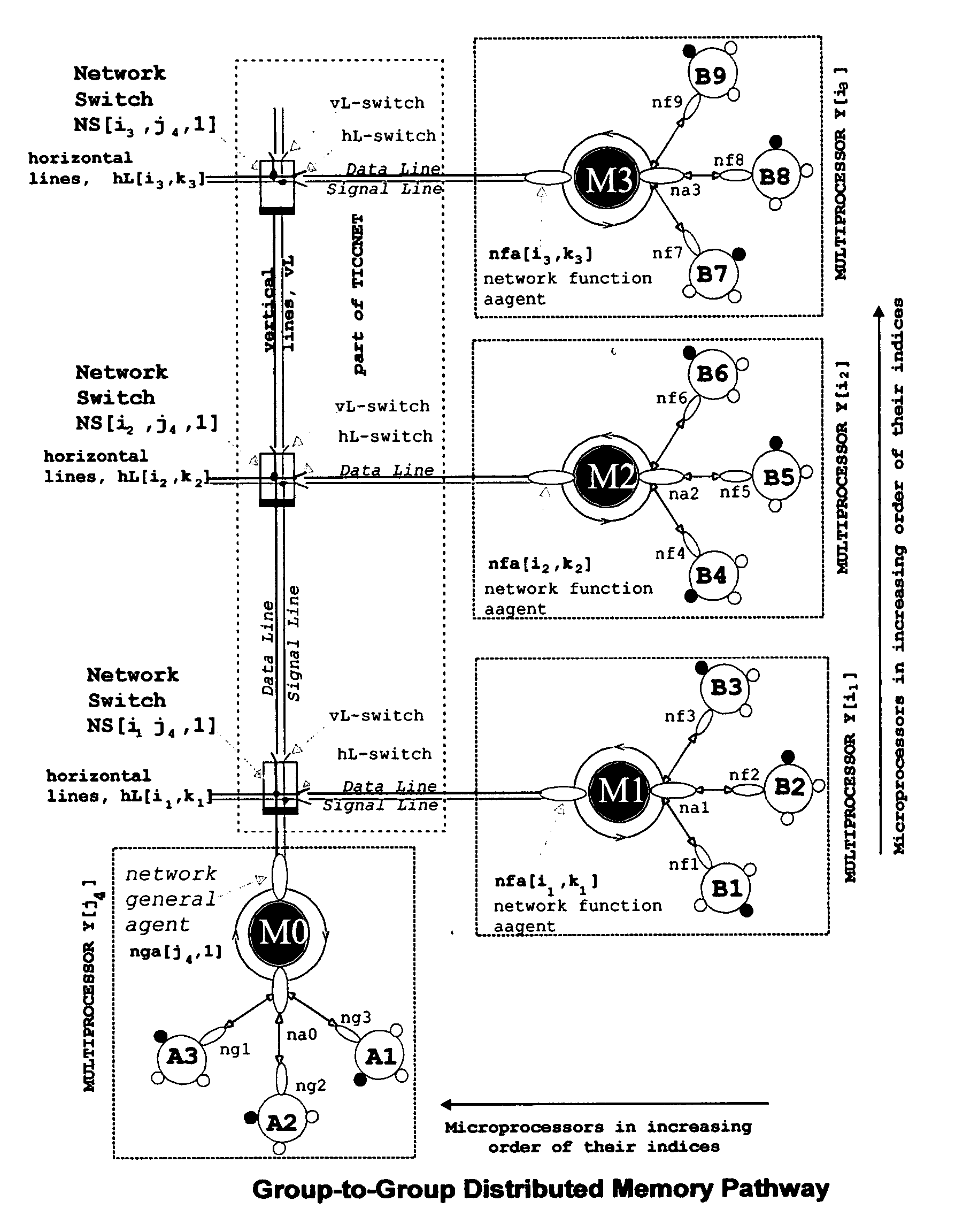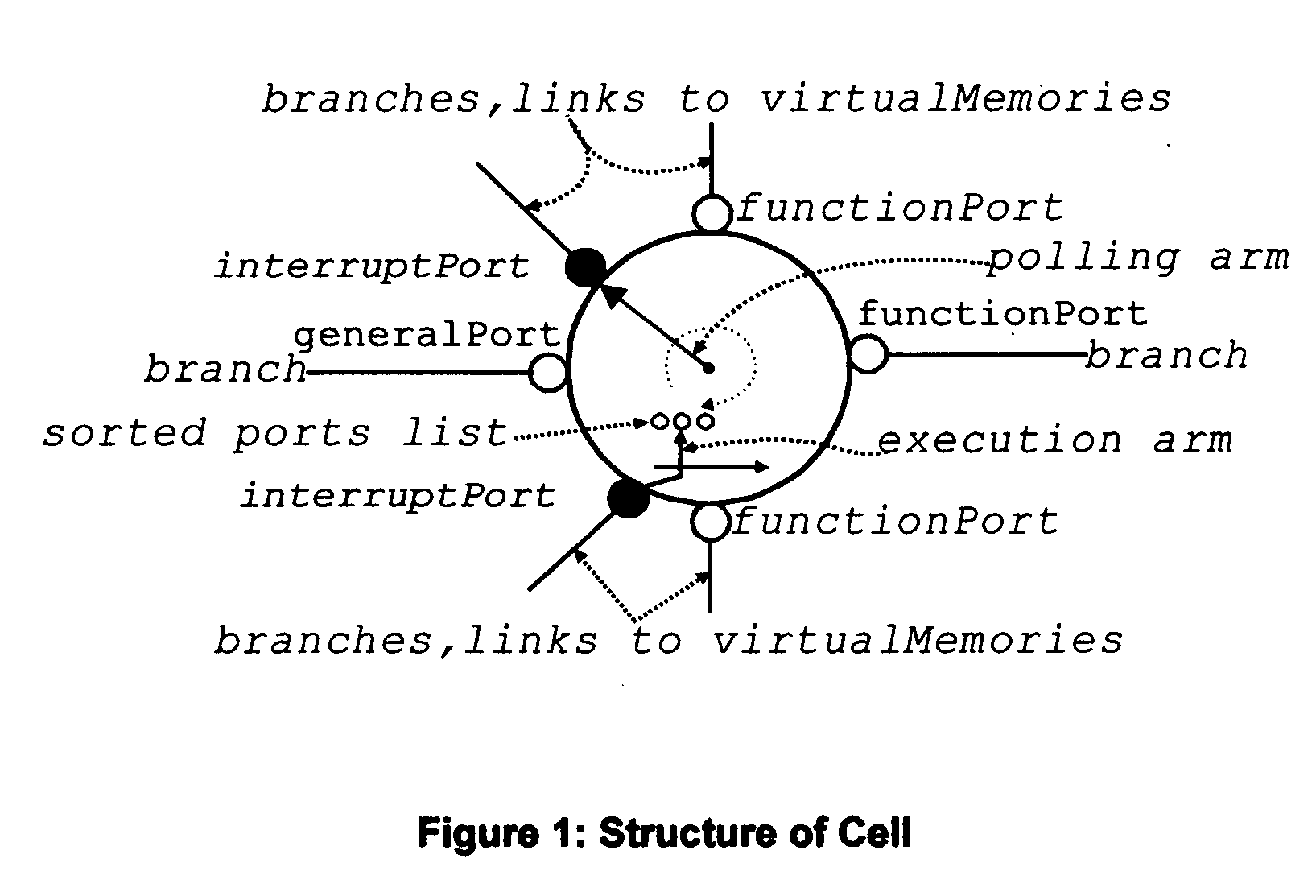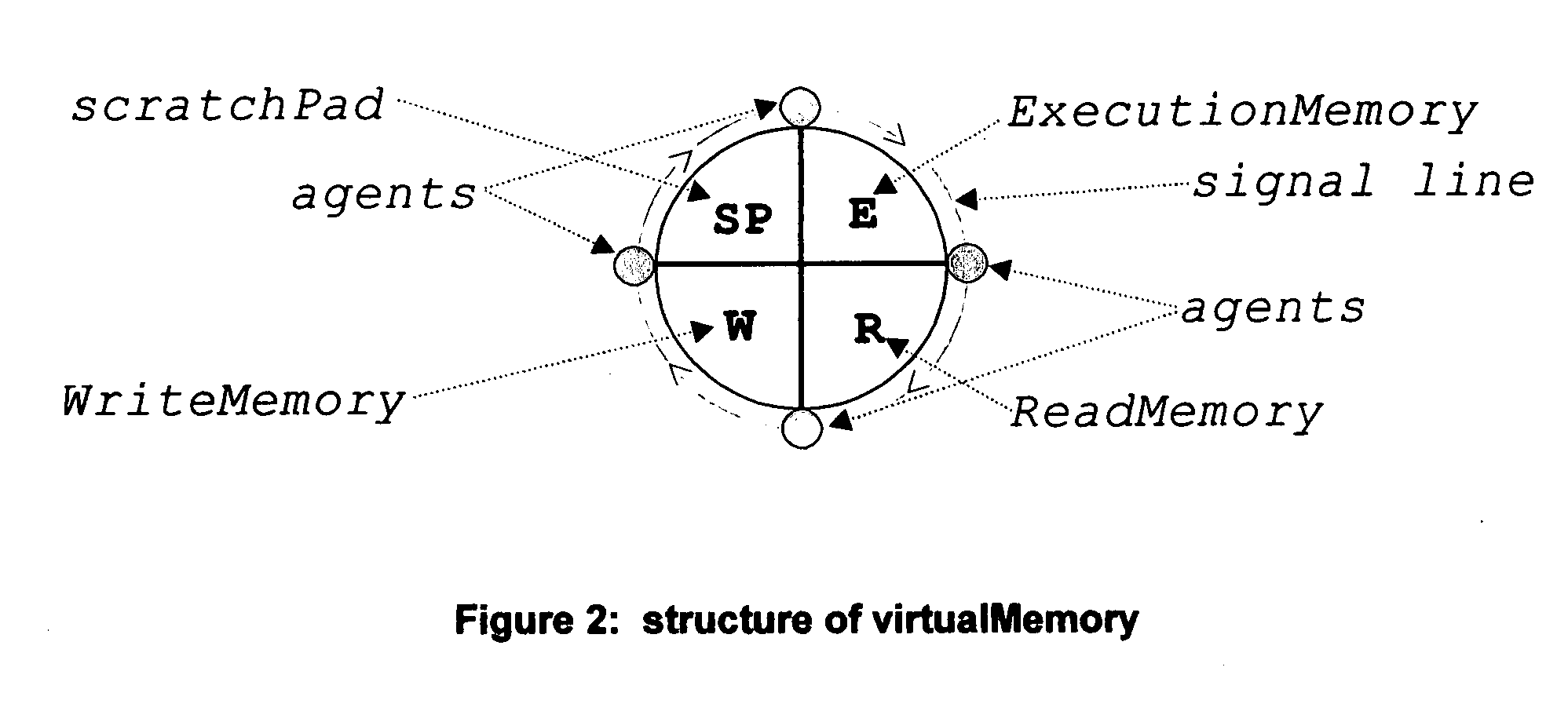Self-scheduled real time software using real time asynchronous messaging
a real-time asynchronous and software technology, applied in software design, program control, instruments, etc., can solve the problems of many hardware design technologies (like cache memory executions, cache memory executions, etc.) that came into vogue, and the large application is difficult to program and verify, so as to simplify the time needed for system development and certification, and reduce the cost of implementation. cost, the effect of reducing the time required for program developmen
- Summary
- Abstract
- Description
- Claims
- Application Information
AI Technical Summary
Benefits of technology
Problems solved by technology
Method used
Image
Examples
Embodiment Construction
OF TICC™-Rtas AND PARALLEL PROGRAMS
[0364] Three examples of Rtas are presented in this section: (i) sensor fusion, (2) image fusion and (3) an automobile fuel cell power transmission system. In all cases, the TIPs and CIPs specify the organization at an abstract level independent of the pthreads used to perform intended computations. Two examples of parallel programs are presented: One the Producer / Consumer problem solution and the other FFT (Fast Fourier Transform). We will discuss scalability issues and activity diagrams for these examples in Section 12.
[0365] 7.1 Examples of Rtas
[0366] We begin with collecting data from sensors for sensor fusion. We assume sensors are distributed over a wide geographical area. The sensors in each neighborhood are organized into local groups. Sensors in a local group jointly communicate with their designated processing cell using group-to-point communication. Ports in a processing cell may be organized using port-vectors, so that the cell jointl...
PUM
 Login to View More
Login to View More Abstract
Description
Claims
Application Information
 Login to View More
Login to View More - R&D
- Intellectual Property
- Life Sciences
- Materials
- Tech Scout
- Unparalleled Data Quality
- Higher Quality Content
- 60% Fewer Hallucinations
Browse by: Latest US Patents, China's latest patents, Technical Efficacy Thesaurus, Application Domain, Technology Topic, Popular Technical Reports.
© 2025 PatSnap. All rights reserved.Legal|Privacy policy|Modern Slavery Act Transparency Statement|Sitemap|About US| Contact US: help@patsnap.com



